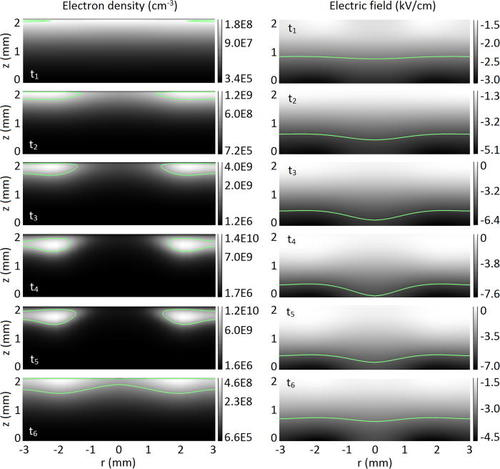Yishan Wang’s research team used a two-dimensional fluid model to investigate the characteristics of helium dielectric barrier discharge (DBD) equipped with ring electrodes at atmospheric pressure. Simulation results show that the transition of discharge also exists as the traditional parallel-plate DBD. The discharge mode translates from the Townsend mode to the glow mode during the rising phase and returns to the Townsend mode in the falling phase of the discharge. Meanwhile, symmetric discharge current and current densities at different radial positions are observed in each cycle, and the current density peak at the radial center of the ring electrode is always higher than that at other positions. In addition, the charged particles follow a periphery-advantage spatial distribution, and the relative temporal variation of charged particles is faster in the periphery than in the central region because of the higher electric field existing there. Moreover, the density of surface charges assembled in the periphery changes faster than that in the central region of the upper dielectric barrier and exhibits an uneven periphery-advantage distribution, which is also ascribed to the higher electric field in the periphery resulted from the ring electrode configuration. Comparing the ring electrode DBD with the traditional one indicates that an inverse discharge structure is observed between the two electrode configurations.

(Original research article "Physics of Plasmas Vol.26, Issue 1, 013511 (2019) https://aip.scitation.org/doi/10.1063/1.5077079")
Download: